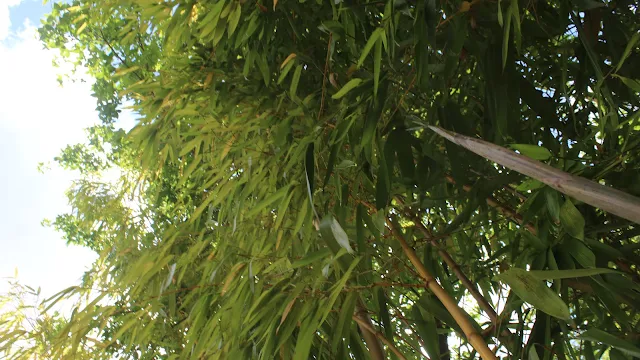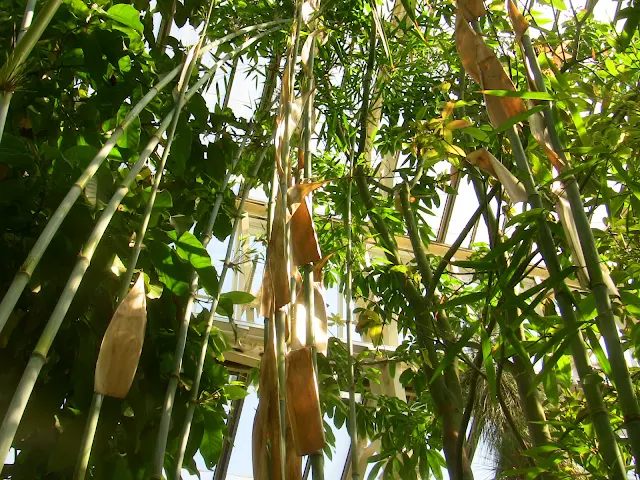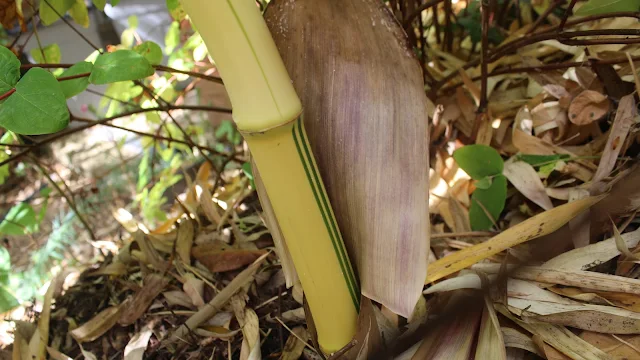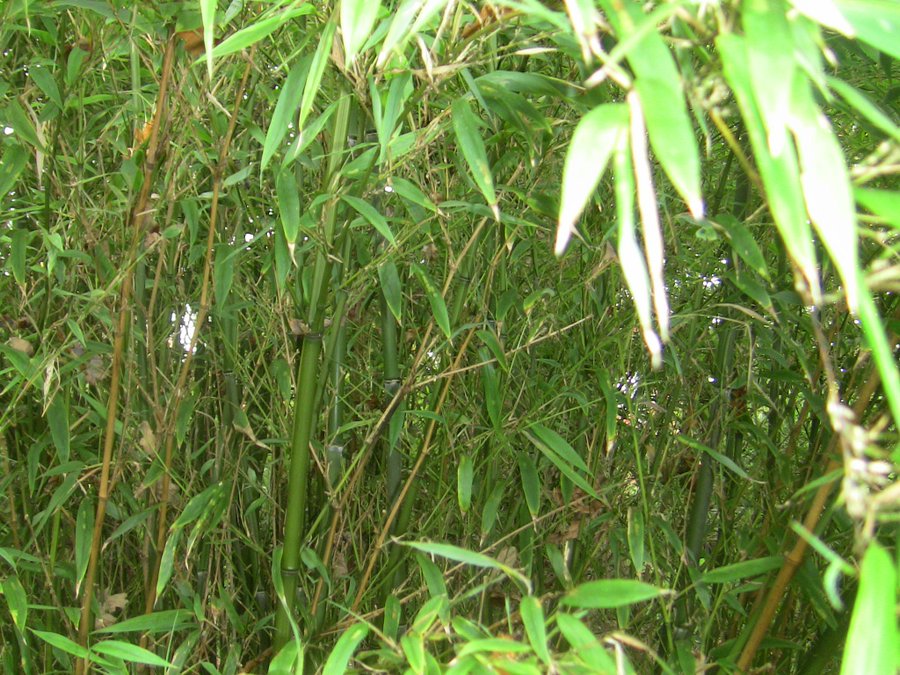An outdoor Bamboo Screen is the best way to shield off unattractive features near the hedge and add a space of admirable greenery.
Many gardeners and homeowners prefer garden bamboo screening because they have desirable features such as dense evergreen foliage, height, spread and hardiness.
About this article: This article is a guide for finding suitable bamboo plants for privacy screens. The bamboo plants are placed into tall, short and medium. If you want an 8 ft privacy screen or a modest natural bamboo screen, check out the original article here.
Garden Bamboo Hedging Screen Ideas
A privacy screen can be thin or thick, tall, short or medium. They come in many shapes and sizes.
The common bamboo plants in the UK have dense evergreen foliage and come in various sizes.
You can find the perfect bamboo Phyllostachys or Fargesia for screening.
To help you, we group the bamboo into different ‘height’ and ‘spread’ categories so that you can use the suggestion as a guide when selecting a bamboo plant for screening.
Height of bamboo privacy screen - Idea #1
Bamboo plants often grow (very quickly) to a full height in the first 3 years and remain evergreen for 10 to 20 years.
Some bamboo plants are tall, best for the tall bamboo privacy screens that are about 8ft tall.
Others are short or fall in between tall and short bamboo. The options are endless.
We group the bamboo into
- tall (6 metres+),
- medium (4 metres to 6 metres), and
- short (1 metre to 4 metres).
Note that the online bamboo suppliers and bamboo retailers will clearly show the average height on the labels.
We use them as the standard heights (and spreads) and do not guarantee that the bamboo plants will reach their full potential because soil condition and the environment can affect their growth.
The new bamboo plants will require some care and attention to grow to the maximum heights.
Also, the bamboo plants are tolerant and hardy, but they will succumb to slug attacks and poor soil conditions. So as any good grower should do, always prepare the site before planting.
Check out the guides on how to prepare the site for growing bamboo plants.
Bamboo privacy screen choose the right spread - Idea #2
Another important feature of bamboo plants to consider for privacy screens is the ‘spread’. The spread is basically how wide the bamboo can spread from the parent plant to shield off the unsightly structure.
Some varieties of clumping bamboo are perfect options for low hedging privacy screens but may not be ideal for blocking an overlooking-window high up. So, it is vital to take into consideration all you want the plant to do.
Notably, the running bamboo plants are invasive and will spread if left unchecked. They are ideal for a tall narrow screen. On the other hand, the clump-formers do not have running rhizomes.
Although they are considered non-invasive, the clumps and culm (or cane) clusters will outgrow the designated site.
We group the bamboo plants, both running and clumping bamboo, into 3 categories - see here. The groupings are based on their average spread.
We hope that the groupings will help you to identify the bamboo plants by how far they spread from the parent plant.
Dense culm clusters thick hedging bamboo screens - Idea #3
The clumping bamboo plants rarely grow to 6 metres and are much denser than the running bamboo. They thrive in the UK climate.
The bamboo plants in this category are predominantly clump-forming with either thicker culms or produce masses of culms in Spring.
As the name suggests, the clumping bamboo canes (culms) tend to grow into a tight cluster around the parent plant, forming a formidable tight screen.
If you are screening a short wall or the neighbour's shed, the clump-forming bamboos are the best options. However, you may have to buy more than one plant to provide a good cover.
As a rule of thumb, plant the clump-forming bamboo no more than 1.5 metres to give you are dense hedging screen.
Here are the 5 bamboo plants that tend to form clusters of ‘Dense-culms and provide small to medium garden bamboo screens.
Arching bamboo for dense privacy screens - Idea #4
The ‘dense foliage' category is made up of tall and arching running bamboo plants commonly referred to as the Umbrella Bamboo.
Their new shoots grow very fast and tall to about 2 – 3 metres before putting out branches.
The dense arching bamboo plants tend to reach a height of about 4 to 6 metres, ideal for thick screens.
For example, these bamboos provide an evergreen cover (or screen) for boundaries, walls and low buildings.
‘Upright’ bamboo for tall privacy screen ideas - Idea #5
Check out where to get this bamboo
here.
This category is an extension of the Tall garden bamboo hedging screen listed above.
Additionally, this extra list separates the tall upright bamboo plants from the arching plants.
Take it as an exclusive list of only the popular Phyllostachys running bamboo plants, except the clumping bamboo Standing Stone.
As the name implies, upright bamboo plants tend to grow straight up. Some can reach over 6 metres if the conditions are right.
Many of these upright bamboo plants tend to do well when they are planted away from the direct wind, providing the best natural screen all year round.
Here are the 5 upright bamboo plants that thrive in the UK, in fact, most of them are on crocus.co.uk.
How to select the best privacy screen - Idea #6
The bamboo privacy screen is the best way to create an admirable natural green space in the garden.
Here is a risk-analysis checklist, a guide to selecting bamboo hedging plants, to help you choose the best garden natural privacy screens.
This table is a tool that will surely help you to identify the right garden hedging bamboo screen. Here is how to use the table:
- firstly, make a shortlist of suitable bamboo plants,
- secondly, use what you know and your expectations of the bamboo and
- finally, use the 5 bamboo plants we stated to identify, by elimination, the bamboo you want.
You will select the right bamboo if you follow these 3 simple steps.
How to grow bamboo for a privacy screen? - Idea #7
Bamboo growers have always asked ‘how close to a structure or the neighbour’s side should they plant bamboo?’.
Some bamboo varieties can destabilise the structures or creep into the neighbour’s side.
If you a going to plant a bamboo hedging screen near the boundary, you’ve got to choose the site well.
There are several factors that will affect your choice of site for planting the running bamboo screen.
If you can control the bamboo from the start, it will become easier as they grow, but how close to the neighbour’s side should you plant a hedging bamboo?
Guide for selecting the right garden bamboo hedging screen
So we have covered many tips and ideas and presented several suggestions for selecting bamboo for hedging garden screens. Here is the 'Guide' to help you make your decision!
Note that the questions are structured especially for you to eliminate the undesirable bamboo plants, leaving only the best option for you. Download the PDF version - Guide for Selecting Garden Hedging Bamboo.

Right garden bamboo privacy screen matters
Finding the best, even better the right, bamboo is what matters the most.
So, use your preferences to find the right bamboo for garden screening.
Other factors to consider are, for example, how high the bamboo should grow and how much space is available for it to spread.
These important factors have been included in this article, so you will not go wrong when selecting a fast-growing evergreen outdoor privacy screen.
Furthermore, growing bamboo on the hedge as a privacy screen sometimes means that you will have to plant the bamboo close to the neighbour’s side.
All these risk-benefit analyses are important as you choose bamboo for your garden.
Conclusion
To conclude, the right option for a Fast-growing Evergreen Outdoor Privacy Screen depends entirely on your situation and choice.
We create the risk-analysis table as a tool for helping you choose the right bamboo.
So, use the suggestions in this article to help you identify the best home and garden hedging privacy screen.
Related articles on Evergreen Outdoor Privacy Screen
Readers' note: This article is so long that we split it into several parts. Here are the related parts that you may also like to read:












